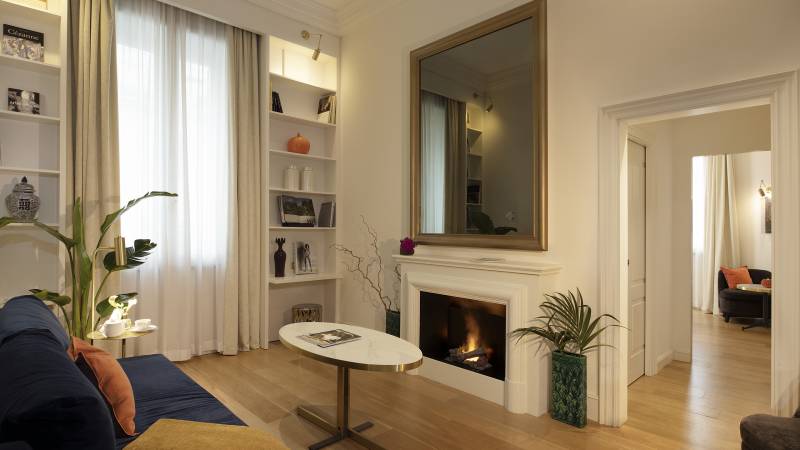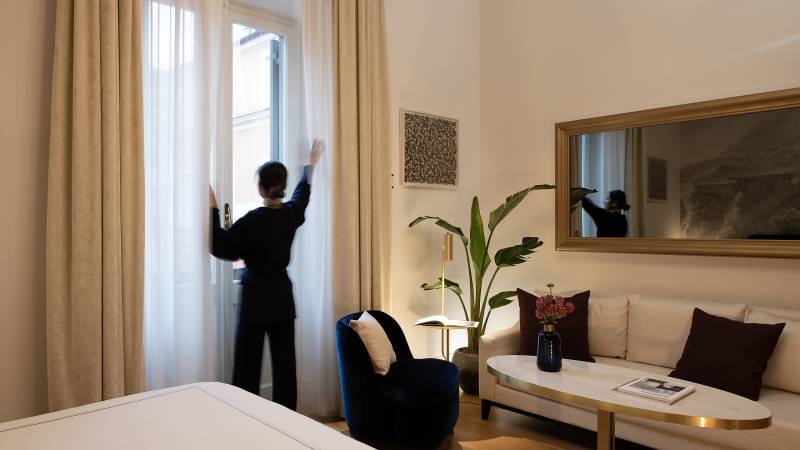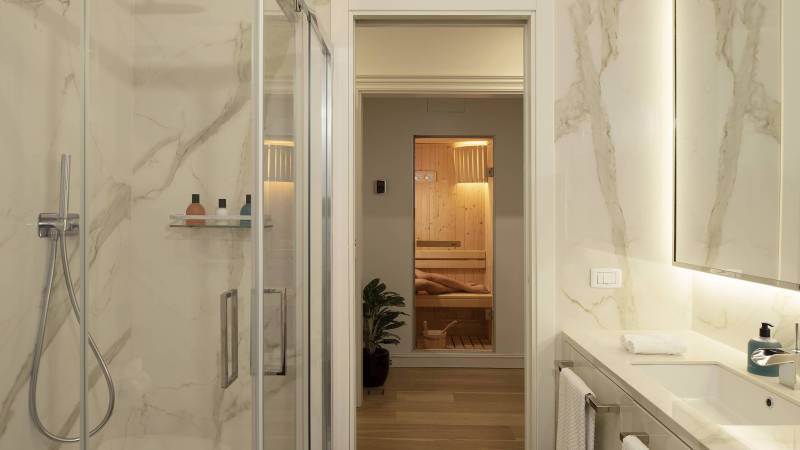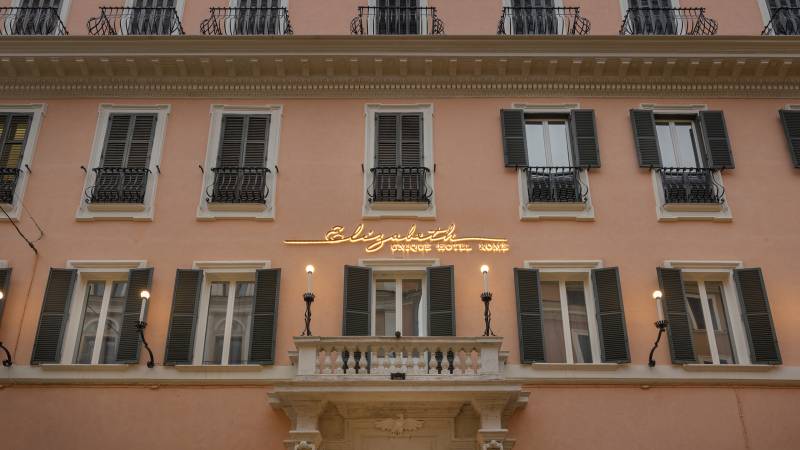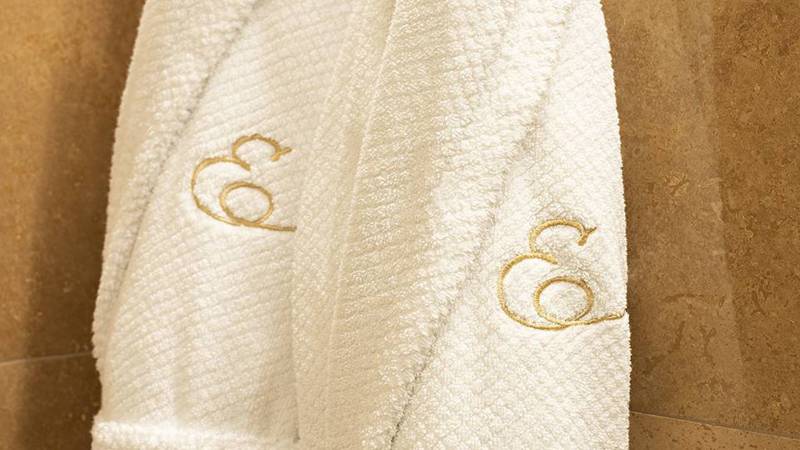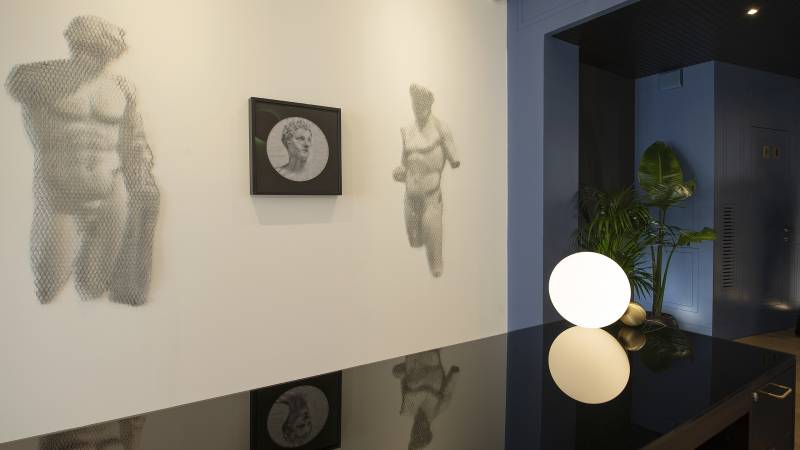
Elizabeth Unique Hotel Rome
+39 06 3223633
+39 06 3219979
info@ehrome.com
Via delle Colonnette 35 - 00186 Rome

Would you like to book a private car transfer to or from the Elizabeth Uique hotel?
Please choose from the following private services we offer or alternatively should you have a specific request which is not listed below, please feel free to contact us (link che apre la mail) and we are more than happy to help you find a suitable solution to get you from A to B.
Executive Car Transfer to or from Fiumicinio Airport:
€ 90,00 one way
Distance: 30km
Capacity: 3 Adults
Luggage Capacity: 2 bags
Time: Approx 45 minutes
Cost One Way tax included: € 90,00
Luxury Car Transfer to or from Fiumicinio Airport:
€ 180,50 one way
Distance: 30km
Capacity: 3 Adults
Luggage Capacity: 2 bags
Time: Approx 45 minutes
Cost One Way tax included: € 180,50
Viano Minivan Transfer to or from Fiumicinio Airport:
€ 154,00 one way
Distance: 30km
Capacity: 6 Adults
Luggage Capacity: 6 bags
Time: Approx 45 minutes
Cost One Way tax included: € 154,00
Executive Car Transfer to or from Ciampino Airport:
€ 90,00 one way
Distance: 30km
Capacity: 3 Adults
Luggage Capacity: 2 bags
Time: Approx 40 minutes
Cost One Way tax included: € 90,00
Luxury Car Transfer to or from Ciampino Airport:
€ 180,50 one way
Distance: 30km
Capacity: 3 Adults
Luggage Capacity: 2 bags
Time: Approx 40 minutes
Cost One Way tax included: € 180,50
Viano Minivan Transfer to or from Ciampino Airport:
€ 154,00 one way
Distance: 30km
Capacity: 3 Adults
Luggage Capacity: 2 bags
Time: Approx 40 minutes
Cost One Way tax included: € 154,00
A virtual journey back in time leads guests along the streets of Ancient Rome.
A multi-sensory experience designed guests to be fully immersed in history through innovative technology.
Contact us for more information or suggestions!
Every day guests are guided when deciding or making bookings for concerts, theater shows and dance performances, which animate the most evocative locations of the city.
Contact us for more information or suggestions!
An unforgettable walk through the most picturesque streets of the historic center, tasting a selection of Italian wines paired with Roman street food delicacies.
Contact us for more information or suggestions!
Learn anecdotes and secrets of Roman specialties to discover the lively panoramic gastronomy of the city.
Workshops and chefs are selected, based on the theme of each course.
Contact us for more information or suggestions!
The hotel’s team has selected for our younger guests a series of fun activities that will open their eyes to local culture and traditions in a fun and playful format.
Contact us for more information or suggestions!
Its older name was ‘li monti’ (the hills), since it lies among the Esquiline, Viminal and Quirinal hills. Monti is one of the most charming and picturesque Roman neighbourhoods. Its narrow streets, old mansions, extant artisans’ shops and atmosphere take you back to a forgotten Rome.
Walking along Via Madonna dei Monti, you will catch Bohemian glimpses, nostalgic about an old-time Rome. Where Via Baccina crosses Salita del Grillo, a magnificent wall retains a collection of delightful ex-votos, and Palazzo del Grillo unveils a spectacular view of the Roman fora.
Via Panisperna crosses the neighbourhood, and its first stretch goes down from Largo Magnanapoli to Largo Angelicum. On top of a double flight of steps, you can admire the baroque Santi Domenico e Sisto church, whose façade tinges with shades of pink at sunset. Inside, spectacular Bernini works, like the high altar, await you. On the left, you can enjoy the view of Villa Aldobrandini and its sixteenth-century hanging garden overlooking the Trajan’s Markets’ tower and Palazzo Aldobrandini, with the secluded wonder of the Nymphaeum fountain. Proceed to Sant’Agata dei Goti church, which retains a beautiful Cosmati pavement. Further on, Via Panisperna crosses Via dei Serpenti and Via del Boschetto, with its famous fashion boutiques, and goes up towards Santa Maria Maggiore until it meets Palazzo Falletti, another enchanting garden with fountain, and Via Urbana, studded with taverns and bistros. One last walk must take you across Via Cavour and up to the Borgia palace, covered in ivy during summer, then on to the square of the San Pietro in Vincoli basilica, where you can find the tomb of Julius II and the famous statue of Moses by Michelangelo Buonarroti.
Villa Medici, French Academy. A sofa facing the window of a first-floor hall provides one of the finest views of Rome. The ideal itinerary to discover the Tridente neighbourhood could start here.
The district encloses the major marvels of the capital, beginning with wonderful Trinità dei Monti church and Fontana della Barcaccia by Pietro and Gian Lorenzo Bernini, in Piazza di Spagna. You cannot miss the timeless charm of Via del Babuino, which retains one of the six talking statues known as The Congress of Wits, and of Via Margutta, whose number 51 reveals the Roman Holiday’s courtyard.
There are countless houses of famous personalities, such as Goethe, Keats and Shelley, and the museum-house of Giorgio De Chirico.
On Via dei Greci, you walk and listen to the melodies of the strings in Santa Cecilia conservatoire. Along Via dei Condotti, you can find the most exclusive and luxurious shops and have a break at Caffè Greco, an institution in the neighbourhood together with Fiaschetteria Beltramme on Via della Croce, where personalities like Fellini, Flaiano and Guttuso met regularly in the 50s. Proceeding towards the Tiber, you reach the Mausoleum of Augustus, under repair, and the Ara Pacis Augustae, the emperor’s epic tribute to peace.
You can start exploring the Jewish neighbourhood from Piazza Mattei, where three precious seventeenth-century turtles by Bernini embellish the fountain designed by Giacomo Della Porta and realised by Taddeo Landini. Keep walking on Via dei Funari to Palazzo Mattei di Giove, which encloses a courtyard worth contemplating.
The Theatre of Marcellus in the Circus Flaminius, between the Tiber and the Capitol, was started by Julius Caesar and finished by Augustus, and now is one of the oldest intact buildings where Roman performances took place. Not far, the Porticus Octaviae, dedicated to Augustus’s sister, is the only portico of the square still standing.
The graceful Sant’Angelo in Pescheria church was built near the fish market of the time. Boccione bakery is an institution that delights the neighbourhood with traditional Jewish sweets, salted and roasted pumpkin seeds, and savouries, while kosher restaurants serve the intensely flavoured dishes of the Judaic-Roman tradition, like carciofi alla giudea. The bakery’s building still bears the Latin writing by Lorenzo Manili, who owned it in the fifteenth century. Be surprised by Museo del Louvre on Via della Reginella, an eclectic cabinet of curiosities displaying old photographs, posters and other twentieth-century oddities.
Faithful to the secluded poetic nature of the neighbourhood, Palazzo Cenci evokes the famous legend of Beatrice Cenci, whose tragic life inspired artists like Stendhal and Shelley.
In the Prati neighbourhood, buildings of the time of Umberto I coexist with the plain edifices of the fascist period, and numerous gardens alternate with wide tree-lined roads. Via Cola di Rienzo is the liveliest among them, and the most renowned thanks to its boutiques and gourmet addresses.
Enchanting Art-Nouveau residences embellish the Tiber embankment and exclusive streets like Via Pompeo Magno, Via Alessandro Farnese and Via dei Gracchi, and sometimes retain features by famous artists, like Duilio Cambelotti and Galileo Chini.
Prati has two souls. One exhibits the versatile cosmopolitan charm of a Roman residential neighbourhood, while the other boasts the major vestiges of Ancient Rome and Christianity, like St. Peter’s Square and its extraordinary artistic and architectural heritage.
The Vatican Museums include many museums and collections, such as the Pio Clementino Museum, the Gregorian Etruscan Museum, the Collection of Contemporary Art, the Upper Galleries, the Vatican Library Museum, the Pinacoteca and obviously the Sistine Chapel, with Michelangelo Buonarroti’s extraordinary frescoes and works by other famous artists of the second half of the fifteenth century, like Sandro Botticelli, Pietro Perugino and Pinturicchio. Walk along Via della Conciliazione and reach Castel Sant’Angelo, which offers an evocative evening visit in summer. Cross the Sant’Angelo Bridge and enjoy a striking view of St. Peter’s basilica.
On Tuesday mornings, you can linger among the stalls of the flower and ornamental market on Via Trionfale and experience a bucolic and genuine facet of the city.
Art-Nouveau surprises, art deco marvels, glimpses of gothic, medieval and baroque art; Coppedè is an odd mixture of architectural styles stretching from Piazza Buenos Aires to Via Tagliamento, in the Trieste neighbourhood. It is not a proper quarter, but an urban experiment designed by architect Gino Coppedè between 1915 and 1927.
An arch adorned with mascarons, ephebi and frescoes introduces to the fairy-tale, fantastic atmosphere of the streets. It is just the beginning of an extraordinary series of mythological figures, marbles, mosaics and stucco works. For example, both Palazzi degli Ambasciatori are studded with original adornments, like the winged Nike that stands out on a turret, or the Madonnella, an eccentric version of the aedicule with the Virgin and Child. Get lost in the streets around Piazza Minci and admire the many examples of the architect’s visionary inspiration. The Frogs’ fountain, which pays homage to Bernini’s turtles in Piazza Mattei; Palazzo del Ragno and its mosaic façade; the building on Via Serchio where tenor Beniamino Gigli lived; the building that houses the Russian Embassy; and Villini delle Fate, the utmost representation of Coppedè style, whose decorations celebrate Italian history and culture.
Is one of the most important names in Italian wine making: for over 25 years he has been the author of Yearbook of the Best Italians not to mention his accomplishments in “Wine Tasting" for the Treccani Encyclopedia. Exclusively for Elizabeth Unique Hotel, he has carefully selected only the best wines produced in the country, absolute importance being given to the quality inside the glass: the wine list at the Bar Bacharach & Bistrot is in fact designed to honuor the guests with a choice from only the finest Italian wines.
Born in Rome in 1962, Fabrizio Russo represents the fourth generation of a family of gallery owners that has been operating successfully in the sector since 1898.
Owner of the Russo Gallery in via Alibert 20, a few steps from Piazza di Spagna, Fabrizio Russo continues the family tradition successfully dealing with modern and contemporary art: alongside the young Italian artists in the rooms of the Gallery are the main artists of the Italian 900 like Giorgio De Chirico, Umberto Boccioni, Giacomo Balla, Amedeo Modigliani, Medardo Rosso, Gino Severini and many others.
Alongside the numerous anthologies dedicated to the protagonists of Italian art, the Gallery regularly participates in the most important national and international exhibitions.
For the Elizabeth Unique Hotel, Fabrizio Russo invited contemporary artists from the Gallery, to create site-specific works by personally selecting all the works exhibited both in the common areas and in the rooms, making the Hotel the ultimate extension of one of the most important galleries in Rome.
The Vatican Museums are one of the major attractions in the world’s smallest sovereign community, which consist in 1200 rooms with more than 70,000 works of art and 20,000 visitors every day.
They are packed with incredible art and a guided tour is highly recommended in order to not to lose one’s way nor the main focal points.
The private tour lasts three hours and includes the: Pio Clementino Museum with some of the best sculptures from the Greek and Roman world including the Laocoon, the Apollo and the Belvedere Torso. Furthermore, exclusively for those who choose this tour, there is the special opportunity to visit the Cabinet of Masks, an area which is normally closed to the public. The hall is well known for the mosaics inserted in the centre of the floor which derive from various parts of Hadrian’s villa in Tivoli. Amongst the sculptures on display, there are several female subjects: a reproduction of the celebrated group of the Three Graces, a statue of a nymph, much admired by Goethe and a series of statues of Aphrodite inspired by the masterpieces of ancient Greek art. From here we will reach the Candelabra Gallery, the Gallery of Tapestries and the Gallery of Maps. To follow, Michelangelo’s great masterpiece: the Sistine Chapel. The fabulous ceiling and Last Judgement on the alter are not to be missed. The visit ends at St. Peter’ basilica, which represents the heart of Christianity, where it is possible to admire Bernini’s Baldacchino and Michelangelo’s Pietà.
- The Vatican museum tours start either at 08:30am or 01:30pm from the hotel and lasts 3 hours. - Please note that an early morning tour is also possible, which starts at 07:00am from the hotel, it is therefore possible to enter the museum one hour before it opens to the general public.
- This tour is not available on Sundays.
Period: April, May, June, August, September, October
Day: Friday
Time: from 07:00pm to 11:00pm (last entry at 09:30pm)
In a few periods of the year it is possible to enjoy the Vatican Museum after normal visiting hours, so as to admire the beauty of a more intimate and tranquil.
- The cost for the 3 hour Vatican Tour is €270.80 (vat included) + ticket cost.
- The visit to St. Peter’s basilica is not included.
Discover the areas of the Vatican museums usually closed to visitors! A special guided tour to discover the hidden masterpieces usually inaccessible to the public:t he architectural staircase of the Bramante Staircase, the wonderful frescoes by Angelico and Gozzoli within the Chapel of Nicholas V and the Cabinet of Masks.
- The itinerary or access to this sector could be subject to unexpected variations or cancellations communicated by the State of the Vatican City.
- The price for the 5 hour Vatican city tour is € 426.40 (vat included) + tickets + € 850 special hidden Vatican museums.
A 3 hour tour which starts by exploring the Flavian amphitheatre, better known as the Colosseum. It was commissioned around 70-72AD by Emperor Vespian fo the Flavian family as a gift to the Roman people and has since then been an important symbol of Rome. After four centuries of active use, the magnificent stadium fell into neglect and until the 18th century was used as a source of building materials. Leaving the Colosseum and walking next to the arch of Titus, we will make our way to the Palatine hill, where Rome was founded 2800 years ago and was a residence for most of the Roman emperors.
The Palatine hill is considered as one of the most important of the seven hills and just below the hill you will reach the Roman Forum which was the centre of all political, religious or economical decisions. Today the centre of the Rome’s political administration resides at the top of the Capitoline hill with the Mayor’s office.
- The price for the 3 hour Ancient Rome tour is € 270,80 (vat included) + tickets.
This 3 hour tour includes Piazza Farnese, in the heart of the Farnese Palace, which today is where the French Embassy resides. Its famous facade was completed by Michelangelo and has inspired many other buildings. A few steps away is one of the most chracteristic and lively food and flower markets in Rome, the Campo dei Fiori. From here, the famous Piazza Navona can be reached with the wonderful sculptural Fountain of the Four Rivers by Bernini. From there through the small winding streets of Rome, we will reach the Pantheon, Rome’s best preserved ancient temple. Last but not least the impressive Trevi Fountain designed in a late baroque style by architect Nicola Salvi, made famous in the movie La Dolce Vita. The tour draws to an end in the most famous and fashionable square in Rome: the Spanish steps, whose monumental 135 step staircase was designed and built to connect the square to the Trinità dei Monti Church. This attracted artists, poets and painters and has become a traditional meeting place for Romans.
- The price for the 3 hour Ancient Rome tour is € 270,80 (vat included).
The Borghese Gallery is one of Rome’s must see museums. It was built in 1613 by Cardinal Scipione Borghese, nephew of Pope Paul V and has one of the best collections in the world of sculptures, bas –reliefs, ancient mosaics, paintings and sculptures from the fifteenth to the eighteenth century.
The villa’s collection is spread out over two floors and divided in 20 decorated rooms; the lower floor is mainly dedicated to sculpture; the upper floor to masterpieces by Bernini, Canova, Caravaggio and Titian. The Borghese Villa has been renovated and extended through the years, and was eventually sold to the Italian government in 1902 along with the entire Borghese estate and surrounding gardens and parklands.
Only 360 visitors are allowed at a time into the museum, which makes it a less crowded attraction in comparison to the Vatican museum. The gallery is surrounded by a large public park which you are free to explore afterwards.
- The cost for the 2 hour Borghese Gallery tour is €228.80 (vat included) + ticket cost.
- Meeting point directly in front of the Borghese Gallery museum – Piazzale del Museo Borghese 5).
- No tours on Mondays.
This 2 hour tour includes a brief overview of ancient Rome as well as Renaissance works. We will visit the Capitoline hill, one of the most important hills in the history of Rome and one of the most beautiful Renaissance squares, designed by Michelangelo and surrounded by buildings from the Capitoline Museums, one of the oldest museums in the World. From the terrace of the Capitoline Hill there is an impressive view over the ruins of the Roman Forum, the heart of ancient Rome. From the Campidoglio our walking tour continues down Via dei Fori Imperiali where you can see the column of Emperor Trajan. On the opposite side are the ruins of the Forum of Julius Caesar and the Forum of Octavian Augustus, the first public squares of the city.
After the imperial squares you will reach the symbol of Rome: the Colosseum a magnificent monument built in only 8 years.
The walking tour will end in S. Pietro in Vincoli Church, which holds Michelangelo’s masterpiece, a large marble sculpture of Moses.
- The cost for the 2 hour Grand Tour is €228.80 (vat included) + ticket cost.
This is an exclusive tour of Rome’s Palazzo Colonna, one of the oldest and largest private palaces in Rome. It is open by private appointment during the week, a true jewel representing Roman Baroque, the Galleria Colonna was commissioned in the 1600s by Cardinal Girolamo I Colonna and his nephew Lorenzo Onofrio Colonna. The Colonna family has lived in the same spot for 800 years. It has included one Pope (Martin V, who saw the papal seat return to Rome from Avignon) and more than a dozen Cardinals. While following the family history and story of Rome through the centuries, visitors can also take in the important art collection and architectural developments of Palazzo Colonna. Continuously inhabited since the middle ages, the palace was extensively renovated in the 17th Century, and offers an unusually complete overview at the lifestyle of the ruling class, especially over the past 500 years. The collection’s prized pieces include Bruegel (younger and elder) in a room dedicated to Dutch paintings and a rich collection of 15-18 Century depictions of Italy. The guided tour begins with a series of rooms exposing art from the family collection, set in a backdrop with authentic periodic furniture and showcasing wonderful marble floors, tapestries, sculptures and chandeliers.
During the visit, we will have a chance to visit the private apartments of Princess Isabelle, who lived here in the 20th century and played a pivotal role in opening the palace to the public.
- The cost for the 2 hour private tour of Colonna Palace is €250.00 (vat included) + €450.00 (private opening of the Colonna Palace).
We would be delighted to arrange special tailor made tours according to specific guest requirements.
Private tours in Battistoni Bespoke labs (suiting and shirting) in the historical store of Via Condotti
Discover the true heritage of the eponymous Roman Sartorial school in the in-house laboratories: the master tailor and the shirtsmakers will reveal you the processes and secrets of the bespoke art. In only a few days they can realize suits, coats and shirts in first fit before you leave. Battistoni will then send you the finished and perfected garments at your home.
Also visit the 1946 unique store and discover the Battistoni Art Collection: Gentilini, Fontana, Capogrossi, Picasso are just a few of the artists who visited the Maison and left an indelible mark.

 GIFT VOUCHER
GIFT VOUCHER


